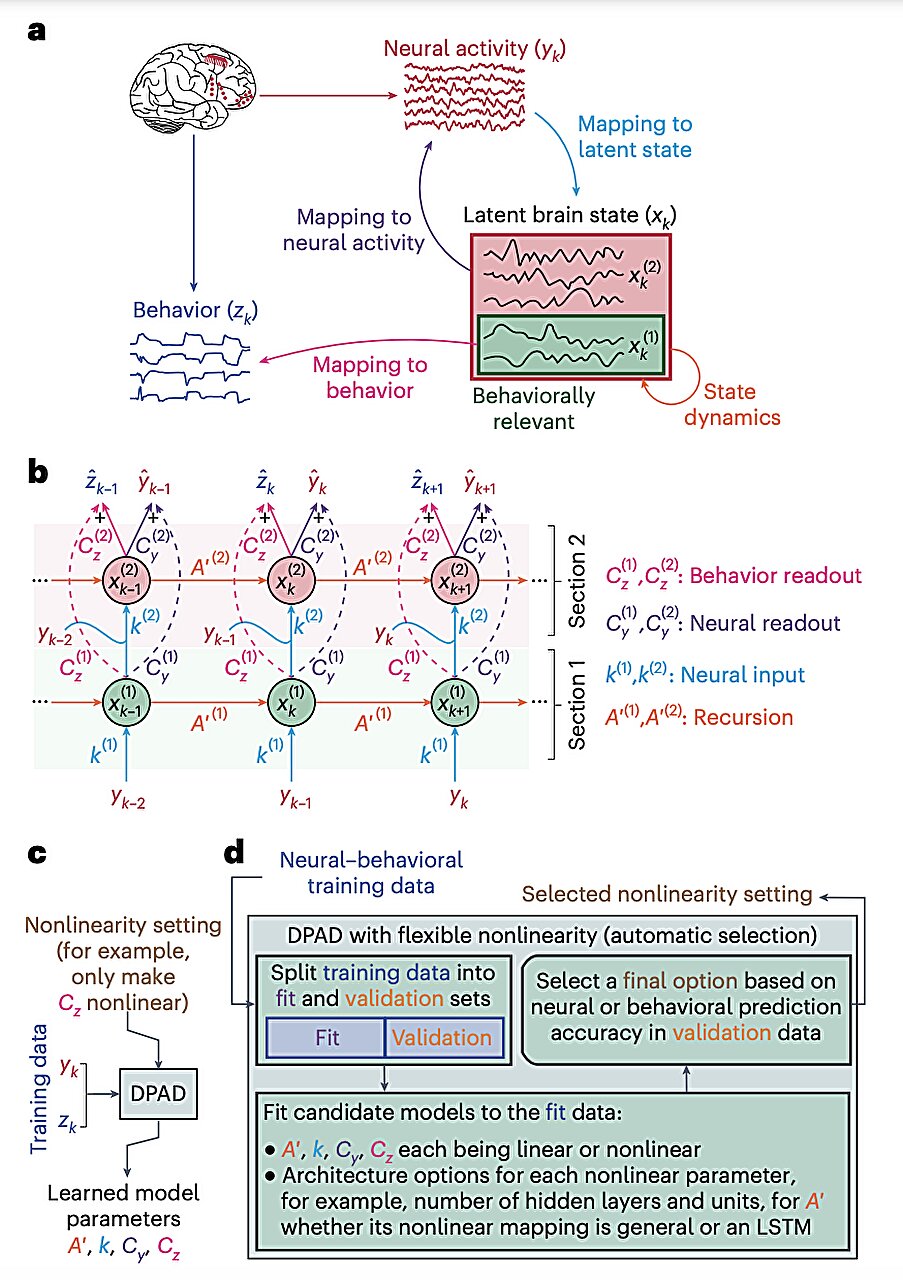
A key objective of several neuroscience studies is to understand and model how the dynamics of distinct populations of neurons give rise to specific human and animal behaviors. Many existing methods for exploring the link between neural activity and behavior rely on the analysis of static images and brain scans, as opposed to the dynamic evolution of neuronal activity over time.
Dynamical models, mathematical or computational approaches for describing the evolution of a system over time provide a valuable alternative to these methods. Most dynamical models introduced in the past were linear, which means that they assumed that changes in neural activity would follow a simple structure.
While linear models tend to be easier to implement and interpret, they often fail to accurately capture complex neural dynamics. This has motivated some neuroscientists and computer scientists to develop other dynamical models that can describe different types of linearity and non-linear dynamics.
Researchers at University of Southern California and University of Pennsylvania recently introduced a new nonlinear dynamical modeling framework based on recurrent neural networks (RNNs) that addresses some of the limitations of dynamical models for neuroscience research introduced in the past. This new framework, outlined in a paper published in Nature Neuroscience, can be used to model both behaviorally relevant and other neural dynamics, yet it dissociates the two and prioritizes dynamics that are linked to behavior.
“Understanding the dynamical transformation of neural activity to behavior requires new capabilities to nonlinearly model, dissociate and prioritize behaviorally relevant neural dynamics and test hypotheses about the origin of nonlinearity,” wrote Omid G. Sani, Bijan Pesaran and Maryam M. Shanechi in their paper. “We present dissociative prioritized analysis of dynamics (DPAD), a nonlinear dynamical modeling approach that enables these capabilities with a multisection neural network architecture and training approach.”
The researchers trained their RNN-based model using a four-step optimization algorithm. This algorithm allows the model to prioritize the learning of behaviorally relevant latent states, while also learning any remaining neural dynamics.
To demonstrate the potential of their nonlinear dynamical modeling framework, the researchers applied it to five distinct neuroscience problems. They specifically used it to analyze and model the neural dynamics in datasets containing recordings of the neuronal activity in the brains of non-human primates while they completed different tasks.
“Analyzing cortical spiking and local field potential activity across four movement tasks, we demonstrate five use-cases,” wrote Sani, Pesaran and Shanechi. “DPAD enabled more accurate neural–behavioral prediction. It identified nonlinear dynamical transformations of local field potentials that were more behavior predictive than traditional power features. Further, DPAD achieved behavior-predictive nonlinear neural dimensionality reduction. It enabled hypothesis testing regarding nonlinearities in neural–behavioral transformation, revealing that in our datasets, nonlinearities could largely be isolated to the mapping from latent cortical dynamics to behavior.”
The findings of the initial tests run by this team of researchers suggest that their model could be a valuable tool for neuroscience research, as it could help to test hypotheses about how dynamic and nonneural dynamics relate to specific behaviors. Notably, their model was found to be applicable to the study of continuous (i.e., continuously monitored for a given time), intermittently sampled (i.e., recorded at different points in time) and categorical (i.e., falling into distinct categories) behaviors.
As part of their study, the researchers primarily demonstrated the use of their approach to model the transformation of primate neural activity into behavior. However, it could potentially also be used to model other brain dynamics, such as the shared and distinct dynamics of different brain regions or the neural dynamics elicited by sensory stimuli.
More information:
Omid G. Sani et al, Dissociative and prioritized modeling of behaviorally relevant neural dynamics using recurrent neural networks, Nature Neuroscience (2024). DOI: 10.1038/s41593-024-01731-2
© 2024 Science X Network
Citation:
A recurrent neural network-based framework to non-linearly model behaviorally relevant neural dynamics (2024, October 5)
retrieved 6 October 2024
from https://medicalxpress.com/news/2024-10-recurrent-neural-network-based-framework.html
This document is subject to copyright. Apart from any fair dealing for the purpose of private study or research, no
part may be reproduced without the written permission. The content is provided for information purposes only.



